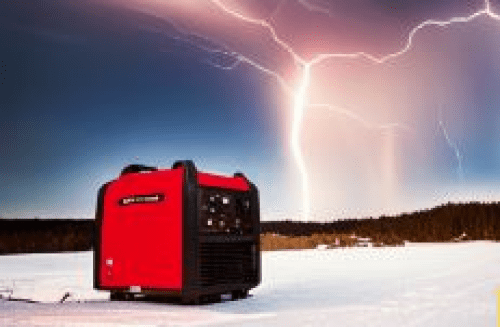If you’re like me, you probably have a portable generator sitting in your garage or shed, collecting dust and cobwebs. You bought it for that one time when the power went out and you needed to keep your fridge running and your phone charged. But since then, you’ve never used it again.
Well, maybe it’s time to dust off that generator and give it some love. Because you never know when the next blackout will hit, and you don’t want to be caught unprepared. But before you plug in your generator and start enjoying some electricity, there are some things you need to know.
Portable generators can be very useful, but they can also be very dangerous if not used properly. They can cause fires, carbon monoxide poisoning, electric shocks, and even explosions. So here are some tips on how to use a portable generator safely and avoid any disasters.
- Read the manual. I know, I know. Reading manuals is boring and tedious. But trust me, it’s worth it. Your manual will tell you everything you need to know about your generator: how to set it up, how to operate it, how to maintain it, and what safety precautions to take. Don’t skip this step.
- Keep your generator outside. Never run your generator indoors or in enclosed spaces like garages or basements. Generators produce a lot of exhaust fumes that contain carbon monoxide (CO), a deadly gas that has no smell or color. CO can build up quickly in enclosed spaces and kill you in minutes without warning.
- Place your generator away from windows and doors. Even if your generator is outside, make sure it’s far enough from any openings that could let CO into your house. Ideally, place your generator at least 20 feet away from your house and point the exhaust away from any windows or doors.
- Use the right extension cords and outlets. Don’t use any old extension cord or outlet to connect your generator to your appliances or devices. Use heavy-duty extension cords that are rated for outdoor use and have a wattage capacity that matches or exceeds the total wattage of what you’re powering.
- Don’t overload your generator. Check the wattage of each appliance or device you want to power with your generator and add them up. Make sure the total doesn’t exceed the rated wattage of your generator (you can find this on the label or in the manual). If it does exceed it, either reduce the number of items you’re powering or get a bigger generator.
- Turn off your main breaker before plugging in your generator.
This is very important if you want to avoid electrocuting yourself or anyone else who might touch a power line outside your house. When the power comes back on, it
can create a surge of electricity that can damage your generator or the appliances connected to it. It can also backfeed into the power grid, creating a hazard for utility workers who might be working on restoring service. - Fuel your generator properly. Make sure you use fresh gasoline that is compatible with your generator (check the manual for specifications). Don’t store gasoline near the generator or any other sources of heat or sparks. Don’t refuel the generator while it’s running or hot; let it cool down first. And don’t overfill the tank; leave some room for expansion.
Maintain your generator regularly.Like any other machine, your generator needs some TLC every once in a while. Check the oil level before each use and change it according to the manufacturer’s recommendations. Clean the air filter, spark plug, and fuel filter as needed. And store your generator in a dry place when not in use.
By following these tips,you can enjoy using your portable generator without blowing up yourself, your house, or anyone else.
Remember: SAFETY FIRST!


